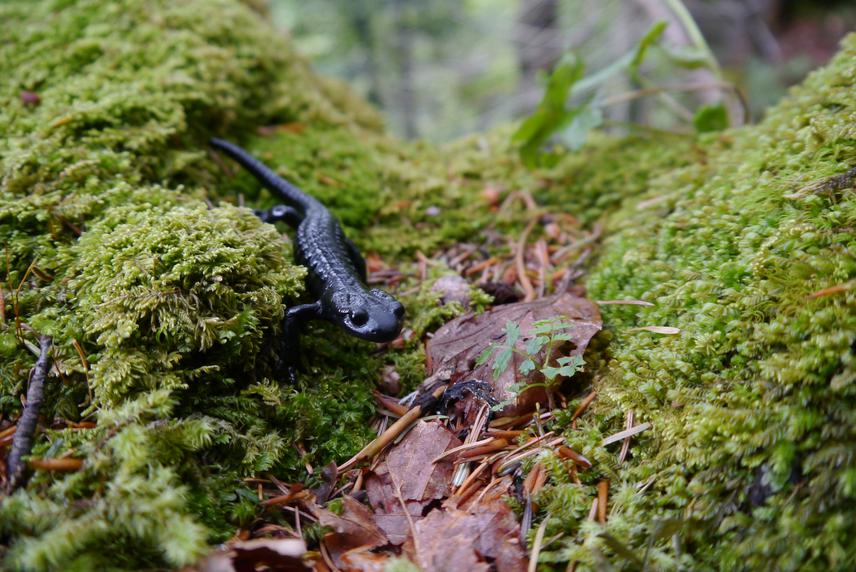Emina Sunje
Other projects
17 Jan 2013
Distribution and Conservation of Endangered Prenj Black Salamander (Salamandra atra prenjensis) in Bosnia and Herzegovina and Establishment of Long Term Monitoring
27 Feb 2018
Establishment of the Regional Monitoring Program for the Dinaric Populations of Alpine Salamanders
The project aims to define the precise distribution of fragmented and isolated populations of black salamander from Mt. Prenj in the Dinarides and connect regional herpetologists in the process of creating a regional action plan for their protection.

Dinaric populations of the black salamander (Salamandra atra prenjensis) are severely fragmented and occupy significantly different ecological niche among each other: Population in B&H; are only present in areas above 1700 m of altitude; elsewhere (e.g Croatia,) they inhabit forested areas. In order to define regional conservation measures through this project we will study the comparative: ecology and reproductive fitness of one Bosnian population and one Croatian population.
We aim to:
a) Analyze (micro-) habitat use, and (micro-) climatic requirements - Data will be used for environment niche modelling (ENM) to create models that will clarify the severely underestimated (sub) species distribution.
b) Make Population transects - Data will be used to estimate stability and size of: Total and Minimal Viable Population and for monitoring of populations.
c) Analyze Thermal ecology – which entails measurement of physiological optima; body and operative temperatures, needed for precise ecological valence estimation. Its quantification is important, since it is predicted that species inhabiting ‘sky-islands’ (such as this) will be most vulnerable to consequences of global climate change.
d) Analyze reproductive fitness - We will collect 30 pregnant females (15 B&H; + 15 Croatian) to test number of offspring(s) generated per generation time. So far it was believed that females always deliver 2 babies. During first Rufford research, females of prenjensis delivered only one offspring. This data is crucial for further conservation planning.
e) Define regional distribution of the species – Field researches will be conducted on several BiH mountains where the presence of the species must yet be confirmed. Field researches in Croatia should reveal new locations of species distribution in Samarske stijene area. Distribution data of regional researchers will additionally help in creating distribution models that will clarify the underestimated areal of the species in Dinaric area.
f) Promote the project in local communities